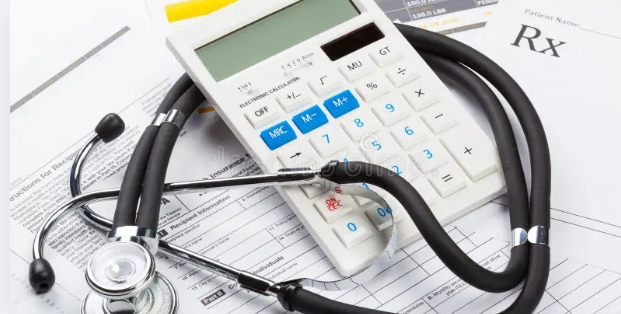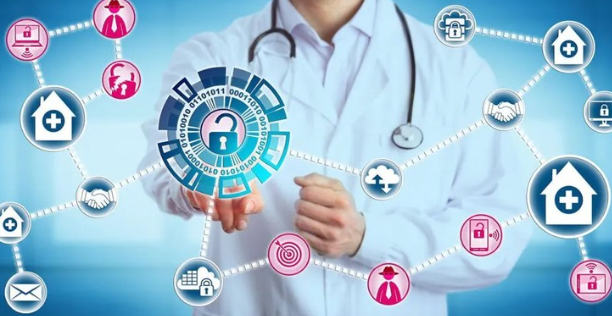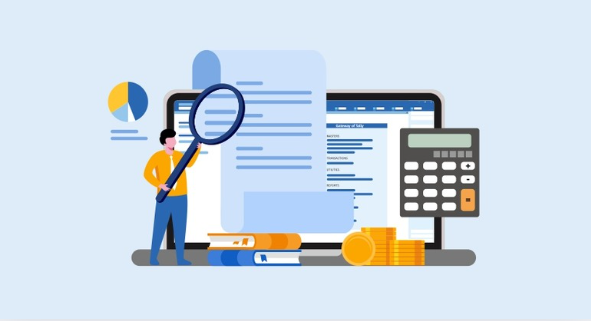Electronic Health Records (EHRs) have revolutionized the way healthcare providers manage patient information, and in turn, have had a significant impact on medical billing. This digital transformation has streamlined the billing process and improved accuracy and efficiency, leading to better patient care.

n the ever-evolving landscape of healthcare, technology has become a powerful catalyst for change. One significant transformation lies in the realm of medical billing, where the adoption of Electronic Health Records (EHRs) has brought about a seismic shift. Let’s delve into how EHRs have revolutionized medical billing processes, streamlining operations, enhancing accuracy, and ultimately improving patient care.
Streamlined Documentation:
Electronic Health Records (EHR) have revolutionized medical billing by streamlining documentation processes. Here’s how:
Automation:
EHR systems automate billing processes by capturing patient information, procedures performed, and diagnosis codes electronically. This reduces the need for manual data entry, minimizing errors and speeding up billing cycles.
Integration:
EHRs integrate with billing software, allowing seamless transfer of patient data to billing systems. This integration ensures accuracy in billing by eliminating duplicate entries and discrepancies between medical records and billing documents.
Real-Time Updates:
EHRs provide real-time updates on patient encounters, treatments, and services rendered. Billing staff can access up-to-date information, enabling faster claim submissions and reducing the risk of denied claims due to outdated or incomplete documentation.
Standardization:
EHRs follow standardized coding systems such as ICD-10 (International Classification of Diseases, 10th Revision) and CPT (Current Procedural Terminology), ensuring uniformity in billing practices across healthcare facilities. This standardization simplifies the billing process and facilitates accurate reimbursement.
Audit Trails:
EHRs maintain comprehensive audit trails of all billing activities, including changes made to patient records and billing codes. These audit trails enhance transparency and compliance with regulatory requirements, reducing the likelihood of fraudulent billing practices.
Cost Savings:
By reducing paperwork, minimizing billing errors, and expediting claim processing, EHRs contribute to cost savings for healthcare providers. They streamline administrative tasks, allowing staff to focus more on patient care and less on billing-related activities.
Automated Coding:
Electronic Health Records (EHRs) have revolutionized medical billing by streamlining processes, reducing errors, and improving efficiency. Let’s delve into how automated coding plays a pivotal role in this transformation:
Enhanced Accuracy:
Automated coding systems utilize algorithms to interpret clinical documentation and assign appropriate medical codes. This minimizes the risk of human error in coding, ensuring accurate billing and reimbursement.
Efficiency:
Manual coding processes can be time-consuming and labor-intensive. Automated coding significantly speeds up the process by swiftly analyzing patient records and generating codes, allowing medical professionals to focus on patient care rather than administrative tasks.
Compliance:
Automated coding systems are designed to adhere to coding standards and regulatory requirements, reducing the likelihood of non-compliance and associated penalties. They ensure that codes are assigned correctly, reflecting the services provided and supporting documentation.
Real-time Feedback:
Some automated coding systems offer real-time feedback on documentation, alerting providers to potential coding discrepancies or missing information. This enables timely corrections and ensures that claims are submitted accurately the first time, reducing denials and delays in reimbursement.
Integration with EHRs:
Many automated coding solutions seamlessly integrate with EHR platforms, allowing for a cohesive workflow. This integration facilitates the transfer of patient data, clinical notes, and coding information, promoting interoperability and data continuity across healthcare settings.
Improved Billing Accuracy:

Electronic Health Records (EHRs) have significantly improved billing accuracy in medical practices by introducing several key changes:
Structured Data Entry:
EHR systems often feature templates and structured fields for documenting patient encounters. These templates prompt healthcare providers to capture specific information required for accurate billing, reducing the likelihood of missing or incomplete data.
Real-time Coding Assistance:
Some EHRs incorporate coding assistance tools that suggest appropriate codes based on the documented clinical information. These tools help ensure that the correct codes are selected, leading to more accurate billing and reduced errors.
Automatic Charge Capture:
EHRs can automate charge capture by linking clinical documentation directly to billing codes. This automation minimizes manual data entry and reduces the risk of errors associated with manual charge capture processes.
Decision Support Tools:
EHRs may include decision support tools that alert providers to potential coding errors or inconsistencies in documentation. These alerts help providers identify and correct billing inaccuracies before claims are submitted, reducing the likelihood of claim denials and revenue loss.
Integration with Billing Systems:
Integration between EHRs and billing systems facilitates seamless data transfer, ensuring that billed services accurately reflect the care provided. This integration eliminates the need for duplicate data entry and reduces the risk of discrepancies between clinical documentation and billing records.
Enhanced Communication:

Electronic Health Records (EHRs) have indeed revolutionized medical billing by enhancing communication among healthcare providers, patients, and billing departments. Here’s how:
Real-time Data Accessibility:
EHRs enable healthcare providers to access patient data instantly. This accessibility ensures that billing departments have accurate and up-to-date information for coding and billing procedures. Real-time data also allows for more precise coding, reducing errors and claim denials.
Streamlined Documentation:
EHRs streamline documentation processes by eliminating paper-based records. This not only reduces administrative burden but also ensures that all relevant information is readily available for billing purposes. Automated documentation features in EHR systems can also prompt providers to include necessary billing codes and documentation requirements, further improving billing accuracy.
Improved Coordination of Care:
EHRs facilitate better communication and coordination among healthcare providers involved in a patient’s care. This coordination ensures that all services rendered are appropriately documented and billed, reducing the risk of missed charges or duplicate billing. Additionally, EHRs allow providers to easily share patient information with specialists or other healthcare facilities, ensuring continuity of care and billing across multiple settings.
Integration with Billing Systems:
Many modern EHR systems integrate seamlessly with billing software, allowing for direct transfer of patient data into billing claims. This integration reduces manual data entry, minimizes errors, and expedites the billing process. Automated billing functionalities within EHRs also enable providers to submit claims electronically, accelerating reimbursement and reducing administrative overhead.
Enhanced Patient Engagement:
EHRs empower patients to actively participate in their healthcare and billing processes. Patient portals associated with EHR systems allow patients to access their medical records, review billing statements, and communicate with providers regarding billing inquiries or discrepancies. By promoting transparency and communication, EHRs contribute to patient satisfaction and facilitate prompt resolution of billing issues.
Increased Efficiency and Cost Savings:
Electronic Health Records (EHR) have revolutionized medical billing by streamlining processes, increasing efficiency, and reducing costs in several ways:
Automation of Billing Processes:
EHR systems automate many aspects of the billing process, reducing the need for manual data entry and minimizing errors. This automation includes coding, claim submission, and tracking reimbursement.
Integration of Billing and Clinical Data:
EHR systems integrate clinical data with billing information, allowing for more accurate coding and billing based on the services provided. This integration ensures that billing reflects the actual care delivered, reducing discrepancies and denials.
Real-time Eligibility Verification:
EHR systems often have built-in features that allow for real-time eligibility verification of patients’ insurance coverage. This helps avoid billing for services that aren’t covered or obtaining prior authorization before providing certain treatments.
Improved Documentation:
EHRs enable more comprehensive and legible documentation of patient encounters, ensuring that all billable services are accurately recorded. This reduces the risk of missed charges and improves compliance with coding and billing regulations.
Faster Claim Submission and Reimbursement:
With electronic billing, claims can be submitted much faster than with paper-based systems. Additionally, electronic claims are processed more quickly by payers, leading to faster reimbursement for healthcare providers.
Compliance and Audit Trail:

The integration of electronic health records (EHRs) has significantly transformed medical billing processes, particularly in terms of compliance and audit trail management. Here’s how:
Documentation Accuracy:
EHRs ensure that medical documentation is accurate and comprehensive. Billing processes heavily rely on accurate documentation of patient encounters, diagnoses, treatments, and procedures. EHRs allow healthcare providers to capture this information in real-time, reducing the chances of billing errors due to incomplete or illegible documentation.
Compliance with Regulations:
EHRs are designed to comply with various regulations such as HIPAA (Health Insurance Portability and Accountability Act) and other healthcare standards. These systems have built-in features for ensuring data security, patient privacy, and confidentiality, which are crucial for compliance with regulatory requirements in medical billing.
Audit Trail Creation:
EHRs automatically generate an audit trail of all actions performed within the system. This includes logging user interactions, data modifications, access to patient records, and other relevant activities. Audit trails provide a comprehensive history of changes made to patient records, which is essential for maintaining transparency and accountability in medical billing processes.
Traceability of Billing Activities:
EHRs facilitate traceability of billing activities by linking patient encounters to specific billing codes, procedures, and services rendered. This traceability ensures that billing practices align with documented patient care, reducing the risk of fraudulent billing or non-compliance with insurance requirements.
Real-Time Claim Submission:
EHRs enable real-time claim submission to insurance providers, streamlining the billing process and reducing administrative delays. Real-time claim submission also allows for immediate verification of patient eligibility, coverage, and pre-authorization requirements, improving billing accuracy and efficiency.
Conclusion:
The integration of Electronic Health Records has fundamentally transformed medical billing, ushering in an era of efficiency, accuracy, and transparency. By leveraging technology to streamline workflows, automate tasks, and enhance communication, healthcare providers can optimize revenue cycles while delivering superior patient care. As the healthcare landscape continues to evolve, EHRs will remain a cornerstone of modern medical billing practices, driving innovation and efficiency across the industry.